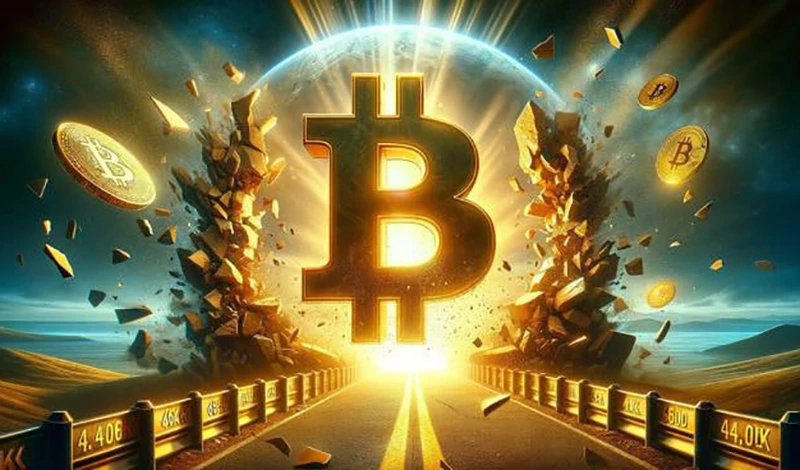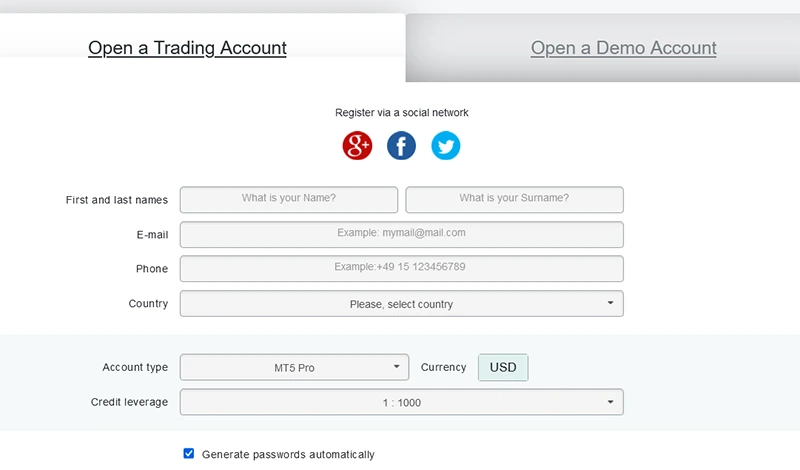Navigating the world of cryptocurrency trading can feel both thrilling and daunting, particularly if you're new to the space. Among the many digital currencies, Bitcoin (BTC) stands out as one of the most sought-after. Whether you're looking to invest, experiment with blockchain technology, or follow trusted advice, it's essential to understand how to buy Bitcoin safely and effectively. In this guide, we’ll take you through the step-by-step process of purchasing Bitcoin on NordFX, a highly regarded global broker, so you can confidently manage your trading or investment.
Table of Contents
What is Bitcoin Margin Trading?
Key Takeaways
- NordFX is a global broker offering cryptocurrency, forex, stocks, indices, and commodities trading services.
- Bitcoin (BTC) is the first and largest cryptocurrency by market capitalization, created as a decentralized digital currency.
- The process to buy Bitcoin on NordFX involves creating an account, funding it, navigating to the cryptocurrency market, purchasing Bitcoin, and securely storing it.
What is NordFX?
Established in 2008, NordFX is a global brokerage known for its wide range of financial instruments, including forex, stocks, and cryptocurrencies like Bitcoin. With a reputation for security and a user-friendly platform, NordFX caters to both beginners and advanced traders. It offers robust trading tools such as MetaTrader 4 (MT4) and MetaTrader 5 (MT5), providing traders with all they need to succeed.
What is Bitcoin?
Bitcoin, launched in 2009 by an anonymous individual or group known as Satoshi Nakamoto, is the pioneer of cryptocurrencies. Unlike traditional currencies issued by central banks, Bitcoin operates on a decentralized network, where transactions are verified by nodes through cryptography and recorded on a public ledger known as the blockchain.
Bitcoin’s value proposition lies in its decentralized nature, immutability, and scarcity—only 21 million Bitcoins will ever exist. Bitcoin's role as a digital currency, a store of value, and a hedge against inflation has solidified its position as a leading cryptocurrency.
Bitcoin transactions are secured by miners who solve complex mathematical problems through a process called proof-of-work. This decentralized validation system ensures that no single entity controls the Bitcoin network, providing transparency and security to users worldwide.

The History of Bitcoin
Bitcoin's history is an intricate tale that combines technology, finance, cryptography, and even some mystery. Here is an overview of its key moments:
1. The Pre-Bitcoin Era (Before 2008)
Before Bitcoin, there were several attempts to create a form of digital cash. Key early pioneers included cryptographers like David Chaum, who created DigiCash in the 1990s, and Nick Szabo, who proposed "bit gold" in the late 1990s. However, these efforts were limited by problems related to centralization, scalability, and vulnerability to government regulation.
The main challenge was creating a decentralized digital currency that could operate without a central authority, ensuring security and preventing double-spending.
2. The Birth of Bitcoin (2008–2009)
Bitcoin's history officially began in 2008 with the publication of a whitepaper titled "Bitcoin: A Peer-to-Peer Electronic Cash System" by a person (or group) using the pseudonym Satoshi Nakamoto. The paper described how a decentralized digital currency could be created using a distributed ledger system called the blockchain.
- October 31, 2008: The whitepaper was published on a cryptography mailing list, introducing the idea of a decentralized, peer-to-peer cryptocurrency that did not require intermediaries like banks.
- January 3, 2009: Satoshi Nakamoto mined the first block of Bitcoin, known as the genesis block (or Block 0), which contained a message in the block's data: "The Times 03/Jan/2009 Chancellor on brink of second bailout for banks." This was a reference to the global financial crisis and central bank bailouts.
3. Early Development and Adoption (2009–2011)
Bitcoin initially attracted a small but passionate community of cryptographers, programmers, and libertarians who believed in the concept of decentralized currency.
- January 2009: Satoshi Nakamoto released the first version of Bitcoin software, and early adopters began mining Bitcoin.
- May 22, 2010: A programmer named Laszlo Hanyecz made the first real-world Bitcoin transaction, paying 10,000 BTC for two pizzas. This event, known as "Bitcoin Pizza Day," is a landmark in Bitcoin's history.
- 2010: Bitcoin exchanges began to appear, most notably Mt. Gox. These exchanges allowed people to trade Bitcoin for traditional currencies, increasing its accessibility and value.
4. Mainstream Awareness and Volatility (2011–2013)
As Bitcoin grew, its price began to rise, and it gained attention from the mainstream media, investors, and even regulators.
- 2011: Bitcoin reached parity with the US dollar for the first time. This was a symbolic moment, signifying that Bitcoin had some real-world value.
- 2011-2012: Bitcoin became popular on dark web marketplaces like Silk Road, which used it for anonymous transactions. This fueled controversy and gave Bitcoin a reputation as a currency for illicit activities.
- June 2011: Bitcoin's price experienced its first significant surge, reaching around $31 before crashing to around $2 in November 2011. These wild price swings became a hallmark of Bitcoin.
5. Mt. Gox and Regulatory Scrutiny (2013–2014)
As Bitcoin's popularity grew, so did the challenges surrounding it. In particular, regulatory scrutiny intensified, and the ecosystem saw some high-profile failures.
- 2013: Bitcoin saw a major price surge, reaching over $1,000 for the first time. This spike in value attracted institutional investors and media attention, but also drew the gaze of regulators around the world.
- 2013: China banned financial institutions from using Bitcoin, while other countries debated how to regulate it.
- February 2014: The most infamous event in Bitcoin's history occurred with the collapse of the Mt. Gox exchange, which had handled about 70% of all Bitcoin transactions. It was revealed that Mt. Gox had lost approximately 850,000 BTC, worth hundreds of millions of dollars at the time, due to hacking and mismanagement. The collapse shook confidence in Bitcoin and led to greater calls for regulation.
6. The Rise of Altcoins and Blockchain Innovation (2014–2016)
With Bitcoin maturing, many alternative cryptocurrencies (altcoins) began to emerge, often building on Bitcoin's technology but with modifications to suit different use cases.
- 2015: Ethereum, a new blockchain with programmable smart contracts, was launched by Vitalik Buterin. This represented a significant evolution in blockchain technology and spawned thousands of new projects that would go on to revolutionize industries beyond currency.
- 2016: The block reward for Bitcoin mining halved from 25 to 12.5 BTC per block. These scheduled halvings were part of Bitcoin’s code to control inflation and would have long-term effects on the supply of new Bitcoin.
7. Institutional Interest and Massive Growth (2017–2019)
Bitcoin's mainstream acceptance continued to grow, especially as institutional investors began taking an interest in cryptocurrencies. Bitcoin's price, which had been relatively stable for several years, skyrocketed again in 2017.
- 2017: Bitcoin's price surged dramatically from around $1,000 at the beginning of the year to nearly $20,000 by December. This was driven by a combination of retail investor frenzy, media hype, and the emergence of initial coin offerings (ICOs).
- December 2017: Bitcoin futures trading was launched by the CME and CBOE exchanges, further legitimizing Bitcoin in the eyes of institutional investors.
- 2018: After reaching its peak in December 2017, Bitcoin entered a prolonged bear market, with its price dropping by more than 80% throughout 2018.
8. The Institutional Era and Global Expansion (2020–2022)
Bitcoin increasingly became viewed as "digital gold" and a hedge against inflation, particularly during the COVID-19 pandemic.
- 2020: Bitcoin's price began a steady recovery, partially driven by institutional interest. Companies like MicroStrategy, Square, and Tesla made headlines by purchasing large amounts of Bitcoin as part of their corporate treasury strategies.
- December 2020: Bitcoin broke its previous all-time high from 2017 and entered a new bull market, eventually reaching over $60,000 by early 2021.
- 2021: El Salvador became the first country to adopt Bitcoin as legal tender, marking a significant milestone in the cryptocurrency’s history.
- 2022: Despite the continued adoption, Bitcoin faced significant challenges, including a market downturn and increased regulatory scrutiny. A major event was the collapse of prominent crypto firms like Three Arrows Capital and Celsius, raising concerns about the risks in the crypto ecosystem.
9. Continued Volatility and Regulation (2022–Present)
Bitcoin's status as an asset class has become more entrenched, but it still faces challenges, particularly in the regulatory realm.
- 2023: The cryptocurrency space saw increasing regulatory efforts, especially in the U.S. and Europe, aimed at managing the risks posed by digital currencies. Governments continued to explore central bank digital currencies (CBDCs) as an alternative to decentralized cryptocurrencies like Bitcoin.
- 2024: Bitcoin continues to be a major asset in the global financial ecosystem, with its adoption growing among both retail users and institutional investors. However, it remains a volatile and controversial asset, subject to ongoing debates over its future, environmental impact, and role in the financial system.
How to Buy Bitcoin on NordFX
If you've decided to buy Bitcoin through NordFX, this step-by-step guide will help you complete the process:
Step 1: Create an Account
Start by setting up a NordFX account:
- Visit the NordFX website and click "Open Account."
- Provide your personal details, such as name, email, and phone number.
- Choose the account type that suits your trading goals, like MT5 Pro or MT5 Zero.
- After submitting your details, activate your account.

Step 2: Fund Your Account
Once your NordFX account is ready, you'll need to deposit funds:
- Log in to your account and go to the "Deposit" section.
- Select your preferred payment method (bank transfer, credit/debit card, cryptocurrency, or eWallets like Neteller or Skrill).
- Specify the deposit amount and follow the instructions to complete the transaction.
Once funded, you can start buying Bitcoin.
Step 3: Access the Cryptocurrency Market
To begin purchasing Bitcoin, access the cryptocurrency market via MT4 or MT5:
- Download and install MT4 or MT5 from the NordFX website.
- Log in with your credentials.
- Open Market Watch, locate the BTCUSD pair, and right-click to open the chart window for trading.
Step 4: Finalize Your Purchase
After selecting your purchase method:
- Enter the amount of Bitcoin you want to buy.
- Confirm the transaction and review the details.
- Your Bitcoin will appear in your NordFX account after the transaction is processed.
What is Bitcoin Margin Trading?
Bitcoin margin trading allows traders to borrow funds to increase their buying power when trading Bitcoin. Using leverage, traders can control larger positions with a smaller deposit. Leverage ratios, such as 2:1 or 5:1, vary by broker.
With margin trading, you can trade both long (betting that Bitcoin's price will rise) and short (betting it will fall), allowing you to profit in different market conditions. However, margin trading involves risk, including the potential for liquidation if the market moves against your position.
NordFX offers Bitcoin margin trading with leverage of up to 1:100 for the BTCUSD pair.
Frequently Asked Questions
Is NordFX Safe for Buying Bitcoin?
Yes, NordFX is a globally recognized broker with robust security features to protect user assets.
Can I Use NordFX Anywhere in the World?
NordFX operates in many countries, but some regions may have restrictions. Verify whether NordFX is available in your area before signing up.
Do I Need to Buy a Whole Bitcoin?
No, you can buy fractional amounts of Bitcoin, making it accessible to traders with varying budgets.
Go Back Go Back
